Application of Modified BP Neural Network in Identification of Unmanned Surface Vehicle Dynamics
Abstract
1. Introduction
2. USV Dynamic System
2.1. Deepsea Warriors uBoat (YL1300M)
- a.
- The body of the YL1300M is shaped to be more streamlined in order to reduce resistance.
- b.
- The YL1300M must have good stability in order for the USV to function in a freshwater and inshore environment.
- c.
- The vessel features a sizable storage area for carrying a variety of tools and supplies.
- d.
- The boat’s upper deck features a sizable cover that can be used to disassemble and repair equipment.
- e.
- There are two electric propulsion modules in the car. Due to the lack of a rudder and gimbaled thruster on the YL1300M, the steering motion can be produced by altering the RPM (revolutions per minute) of the two primary thrusters.
2.2. USV Dynamic Model
3. Neural Network
3.1. The Back Propagation Neural Network Principle
3.2. BPNN for Dynamic Model Identification
4. Experimental Setup and Simulation Results
5. Conclusions
- (1)
- The modified BPNN exhibits enhanced convergence speed and superior ship trajectory prediction capabilities compared to the conventional BPNN. The calculated trajectories of the propeller at various rotational speeds exhibit a strong correlation with the actual trajectories.
- (2)
- The improved BPNN demonstrates effective estimation capabilities for the rotational velocity throughout both the acceleration and stability stages at various revolutions per minute (rpm) of the propeller. Furthermore, reliable predictions have been made for the acceleration of an increase and sway, in comparison to their actual values.
Author Contributions
Funding
Institutional Review Board Statement
Informed Consent Statement
Data Availability Statement
Conflicts of Interest
References
- Gianluca, A.; Stefano, C.; Paolo, D.L. On data-driven identification: Is automatically discovering equations of motion from data a Chimera? Nonlinear Dyn. 2023, 111, 6487–6498. [Google Scholar] [CrossRef]
- Nagumo, J.I.; Noda, A. A learning method for system identification. IEEE Trans. Autom. Control 1967, 12, 282–287. [Google Scholar] [CrossRef]
- Holzhuter, T. Robust identification scheme in an adaptive track controller for ships. In Proceedings of the 3rd IFAC Symposium on Adaptive System in Control and Signal Processing, Glasgow, UK, 19–21 April 1989; pp. 118–123. [Google Scholar]
- Kallstrom, C.G.; Astrom, K.J. Experiences of system identification applied to ship steering. Automatica 1981, 17, 187–198. [Google Scholar] [CrossRef]
- Yoon, H.K.; Rhee, K.P. Identification of hydrodynamic coefficients in ship maneuvering equations of motion by estimation-before-modeling technique. Ocean Eng. 2003, 30, 2379–2404. [Google Scholar] [CrossRef]
- Shin, J.; Kwak, D.J.; Lee, Y.-I. Adaptive path following control for an unmanned surface vessel using an identified dynamic model. IEEE/ASME Trans. Mechatron. 2017, 22, 1143–1153. [Google Scholar] [CrossRef]
- Selvam, R.P.; Bhattacharyya, S.; Haddara, M. A frequency domain system identification method for linear ship maneuvering. Int. Shipbuild. Prog. 2005, 52, 5–27. [Google Scholar]
- Di Vito, D.; Cataldi, E.; Di Lillo, P.; Antonelli, G. Vehicle Adaptive Control for Underwater Intervention Including Thrusters Dynamics. In Proceedings of the 2018 IEEE Conference on Control Technology and Applications (CCTA), Copenhagen, Denmark, 21–24 August 2018; pp. 646–651. [Google Scholar]
- Rajesh, G.; Bhattacharyya, S. System identification for nonlinear maneuvering of large tankers using artificial neural network. Appl. Ocean Res. 2008, 30, 256–263. [Google Scholar] [CrossRef]
- Oskin, D.A.; Dyda, A.A.; Markin, V.E. Neural Network Identification of Marine Ship Dynamics. In Proceedings of the 9th IFAC Conference on Control Applications in Marine Systems, Osaka, Japan, 17–20 September 2013. [Google Scholar]
- Pan, C.Z.; Lai, X.Z.; Yang, S.X.; Wu, M. An efficient neural network approach to tracking control of an autonomous surface vehicle with unknown dynamics. Expert Syst. Appl. 2013, 40, 1629–1635. [Google Scholar] [CrossRef]
- Bibuli, M.; Zereik, E. Analysis of an unmanned underwater vehicle propulsion model for motion control. J. Guid. Control Dyn. 2022, 45. [Google Scholar] [CrossRef]
- Fossen, T.I. Marine Control Systems: Guidance, Navigation and Control of Ships, Rigs and Underwater Vehicles; Marine Cybernetics: Trondheim, Norway, 2002. [Google Scholar]
- Woo, T.; Park, J.Y.; Yu, C.; Kim, N. Dynamic model identification of unmanned surface vehicles using deep learning network. Appl. Ocean Res. 2018, 78, 123–133. [Google Scholar] [CrossRef]
- Sonnenburg, C.R.; Woolsey, C.A. Modeling, identification, and control of an unmanned surface vehicle. J. Field Rob. 2013, 30, 371–398. [Google Scholar] [CrossRef]
- Li, J.C.; Zhao, D.L.; Ge, B.F.; Yang, K.W.; Chen, Y.W. A link prediction method for heterogeneous networks based on BP neural network. Physica A 2017, 495, 1–17. [Google Scholar] [CrossRef]
- Hagan, M.T.; Menhaj, M.B. Training feedforward networks with the Marquardt algorithm. IEEE Trans. Neural Netw. 1994, 5, 989–993. [Google Scholar] [CrossRef] [PubMed]
- Suri, R.N.; Deodhare, D.; Nagabhushan, P. Parallel Levenberg_Marquardt-based neural network training on Linux clusters—A case study. In Proceedings of the Third Indian Conference on Computer Vision, Graphics & Image Processing, Ahmadabad, India, 16–18 December 2002. [Google Scholar]


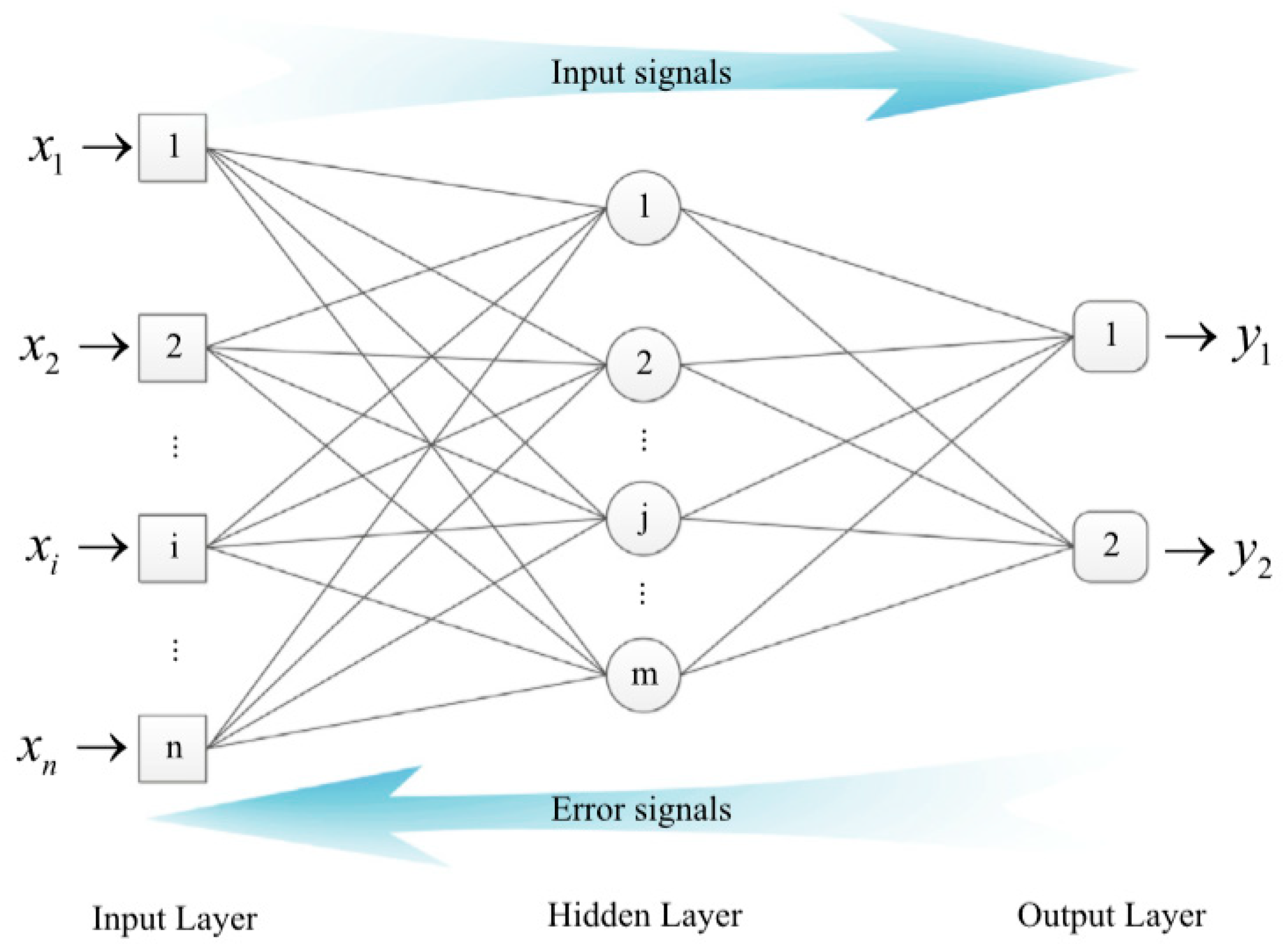
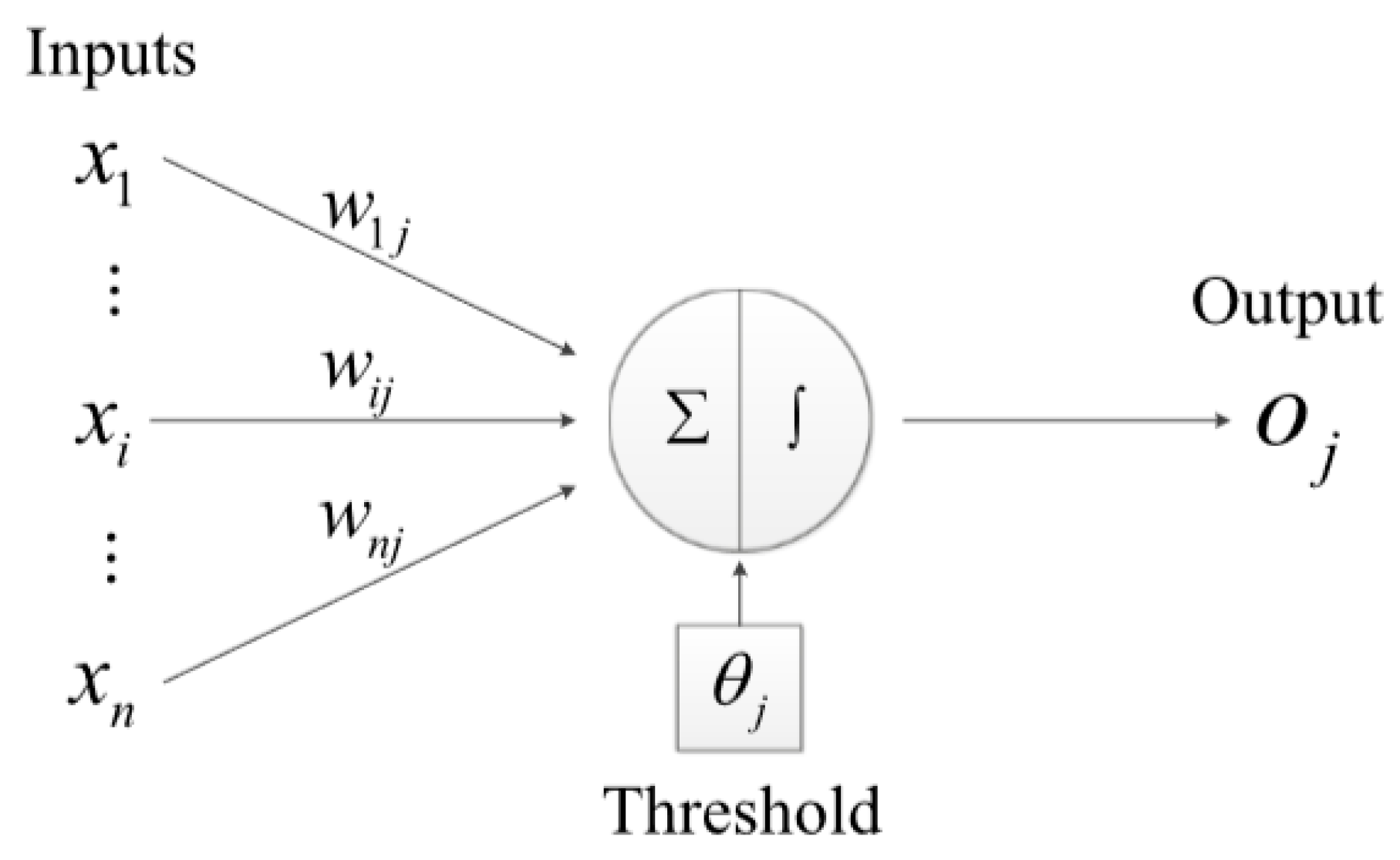



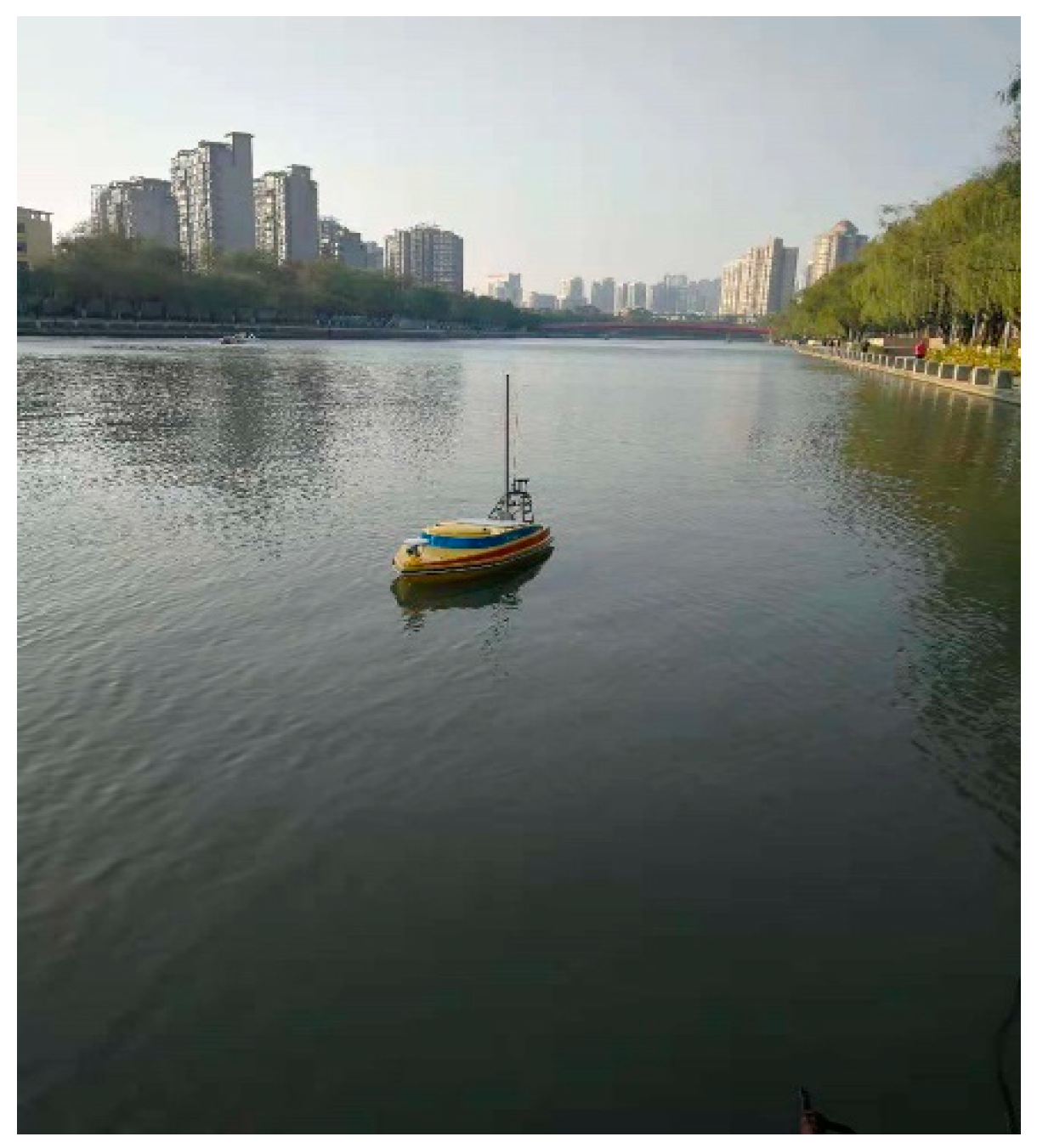
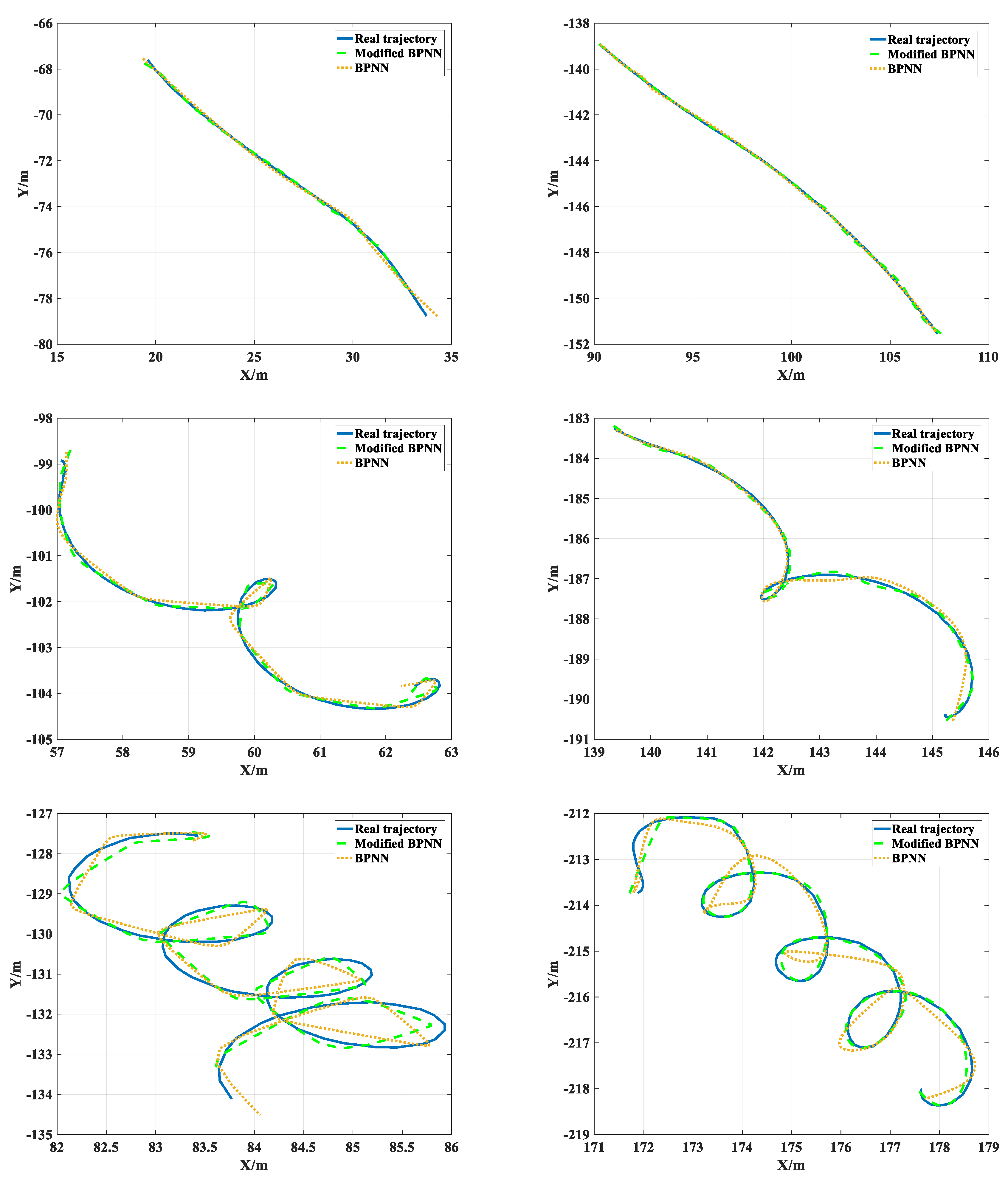


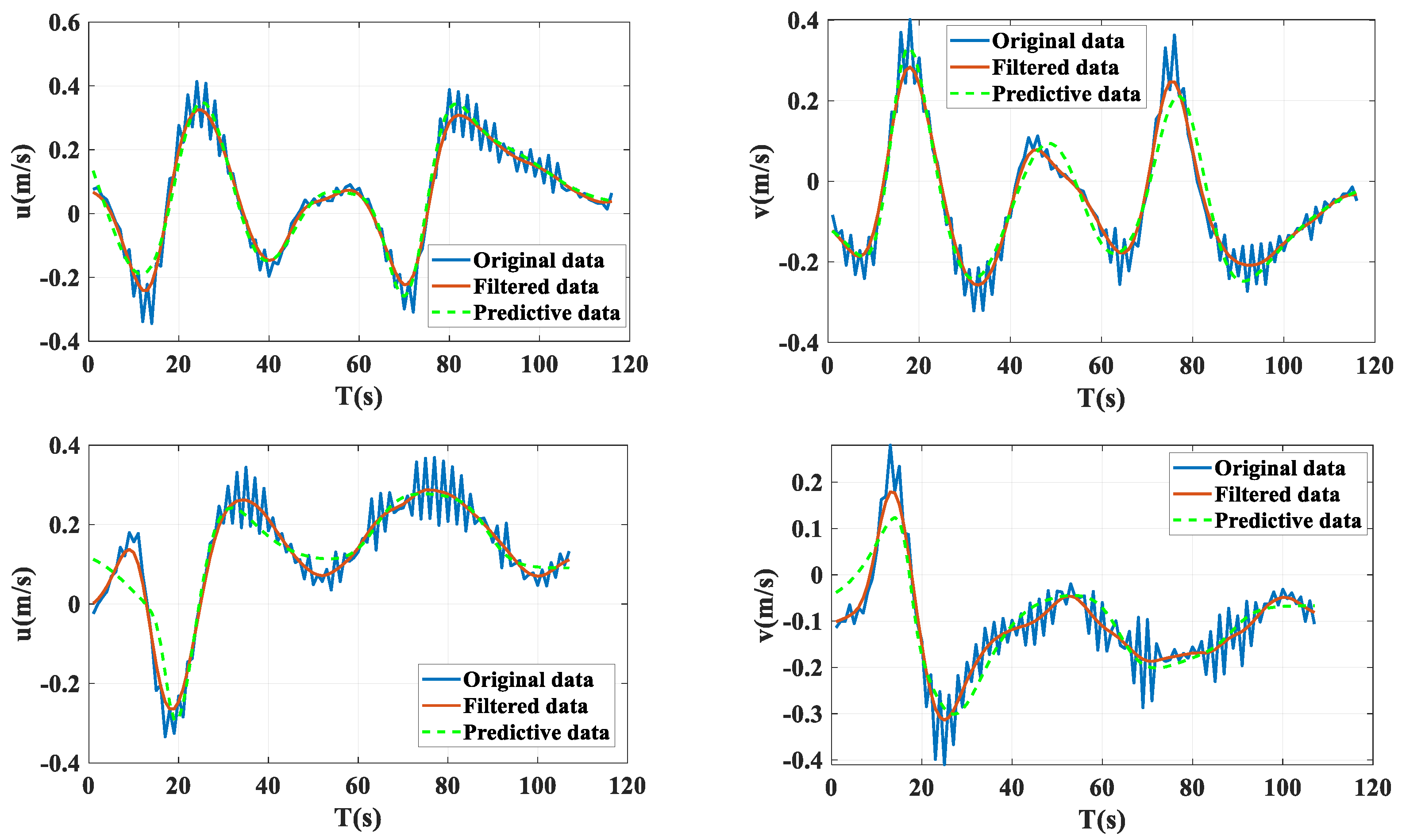
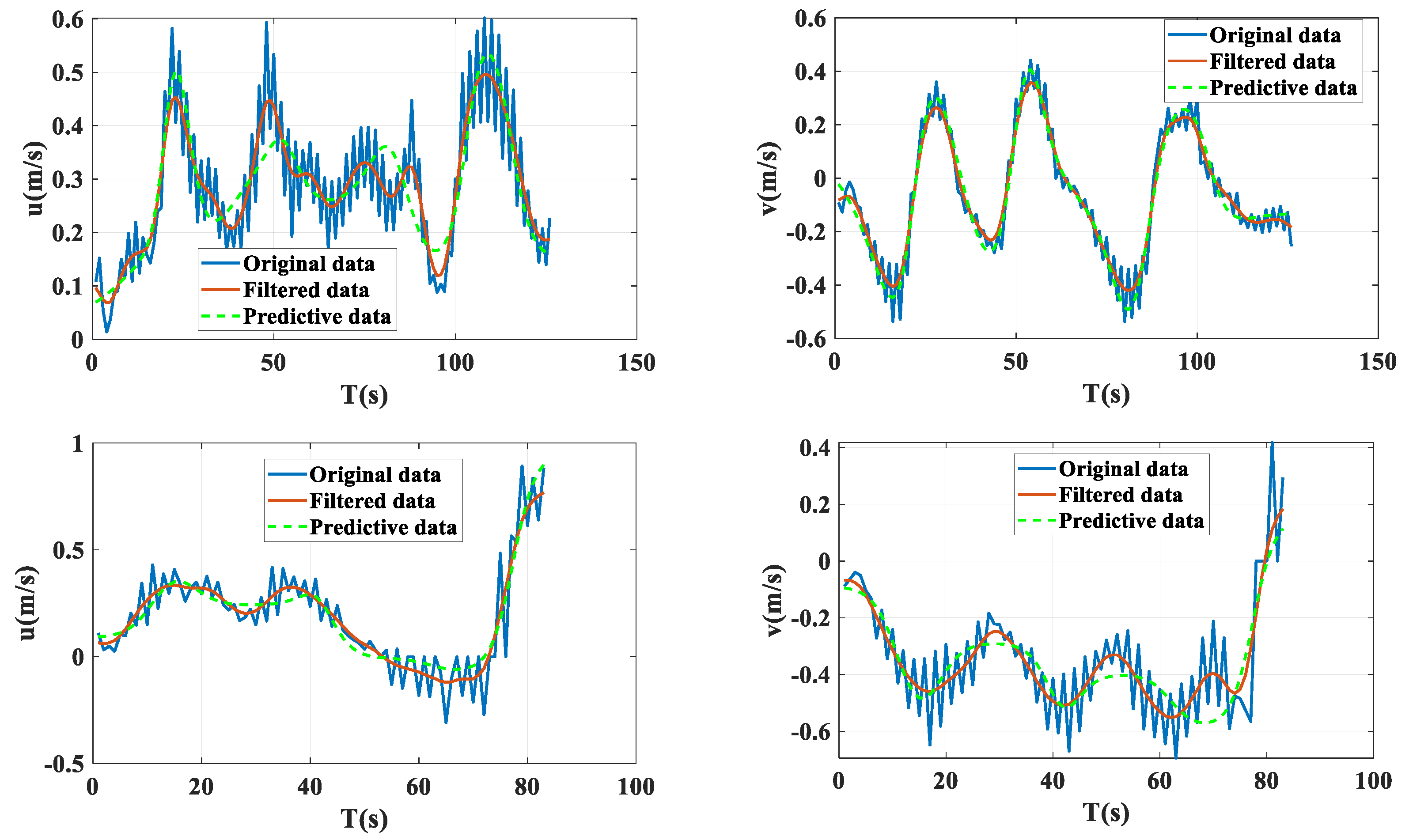
| Left (RPM) | Right (RPM) | Left (RPM) | Right (RPM) | Left (RPM) | Right (RPM) |
|---|---|---|---|---|---|
| −100 | 0 | 0 | −100 | −100 | −100 |
| −200 | 0 | 0 | −200 | −200 | −200 |
| −300 | 0 | 0 | −300 | −300 | −300 |
| −400 | 0 | 0 | −400 | −400 | −400 |
| −500 | 0 | 0 | −500 | −500 | −500 |
| −600 | 0 | 0 | −600 | −600 | −600 |
| −700 | 0 | 0 | −700 | −700 | −700 |
| −800 | 0 | 0 | −800 | −800 | −800 |
| −900 | 0 | 0 | −900 | −900 | −900 |
| −1000 | 0 | 0 | −1000 | −1000 | −1000 |
| 100 | 0 | 0 | 100 | 100 | 100 |
| 200 | 0 | 0 | 200 | 200 | 200 |
| 300 | 0 | 0 | 300 | 300 | 300 |
| 400 | 0 | 0 | 400 | 400 | 400 |
| 500 | 0 | 0 | 500 | 500 | 500 |
| 600 | 0 | 0 | 600 | 600 | 600 |
| 700 | 0 | 0 | 700 | 700 | 700 |
| 800 | 0 | 0 | 800 | 800 | 800 |
| 900 | 0 | 0 | 900 | 900 | 900 |
| 1000 | 0 | 0 | 1000 | 1000 | 1000 |
| 100 RPM | 500 RPM | 1000 RPM | ||||
| X (m) | Y (m) | X (m) | Y (m) | X (m) | Y (m) | |
| Traditional BPNN | 0.055 | 0.033 | 0.139 | 0.151 | 0.147 | 0.325 |
| Modified BPNN | 0.048 | 0.028 | 0.121 | 0.147 | 0.133 | 0.287 |
| −100 RPM | −500 RPM | −1000 RPM | ||||
| X (m) | Y (m) | X (m) | Y (m) | X (m) | Y (m) | |
| Traditional BPNN | 0.062 | 0.103 | 0.118 | 0.103 | 0.138 | 0.289 |
| Modified BPNN | 0.044 | 0.088 | 0.105 | 0.096 | 0.115 | 0.244 |
Disclaimer/Publisher’s Note: The statements, opinions and data contained in all publications are solely those of the individual author(s) and contributor(s) and not of MDPI and/or the editor(s). MDPI and/or the editor(s) disclaim responsibility for any injury to people or property resulting from any ideas, methods, instructions or products referred to in the content. |
© 2024 by the authors. Licensee MDPI, Basel, Switzerland. This article is an open access article distributed under the terms and conditions of the Creative Commons Attribution (CC BY) license (https://creativecommons.org/licenses/by/4.0/).
Share and Cite
Zhang, S.; Liu, G.; Cheng, C. Application of Modified BP Neural Network in Identification of Unmanned Surface Vehicle Dynamics. J. Mar. Sci. Eng. 2024, 12, 297. https://doi.org/10.3390/jmse12020297
Zhang S, Liu G, Cheng C. Application of Modified BP Neural Network in Identification of Unmanned Surface Vehicle Dynamics. Journal of Marine Science and Engineering. 2024; 12(2):297. https://doi.org/10.3390/jmse12020297
Chicago/Turabian StyleZhang, Sheng, Guangzhong Liu, and Chen Cheng. 2024. "Application of Modified BP Neural Network in Identification of Unmanned Surface Vehicle Dynamics" Journal of Marine Science and Engineering 12, no. 2: 297. https://doi.org/10.3390/jmse12020297
APA StyleZhang, S., Liu, G., & Cheng, C. (2024). Application of Modified BP Neural Network in Identification of Unmanned Surface Vehicle Dynamics. Journal of Marine Science and Engineering, 12(2), 297. https://doi.org/10.3390/jmse12020297






